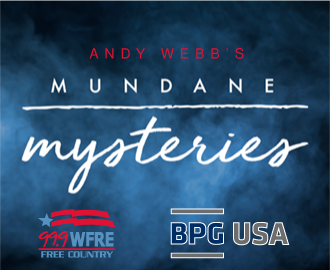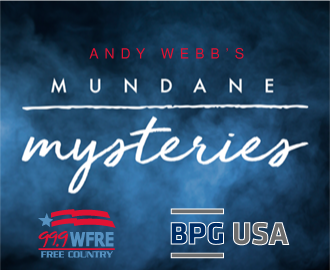The Free Ride Blog
MUNDANE MYSTERIES: Does Peeing On A Jellyfish Sting Actually Work?

Getting stung by a jellyfish can ruin a nice day at the beach. But does the old wives’ tale about peeing on a jellyfish sting actually help? Or work at all?
The sting of a jellyfish comes from specialized cells in the surface of its tentacles, known as cnidocytes. Each small, bulb-shaped cell holds a nematocyst, a barbed, threadlike tube filled with venom. On the outside of each cell is a tiny hair, called a cnicocil. And when that “hair trigger” is disturbed, the cell’s toxic harpoon explodes from its capsule into the skin of the jellyfish’s prey (an unlucky swimmer). The amount & type of venom, as well as the effect that it causes, depends on the type of jellyfish, the number of nematocysts involved, and the area & thickness of the skin they strike. Whatever the variables, a jellyfish sting is never fun.
The first step in treating a jellyfish sting is to remove any tentacles parts left behind on the skin without triggering any unfired nematocysts & making things worse. But pressure triggers the cells, so you can’t just pick them off, as whoever’s doing the picking will just get their fingers stung, too. Chemical changes, like throwing off the salt balance between the outside & inside of the cell, could also cause the stingers to fire…and that’s why urine isn’t really any good. Sure, urine contains salts, but it’s just too variable. Concentrated urine might do the trick, but if the person doing the peeing is well-hydrated, the urine will be too diluted with water, which will make the stingers fire. What’s more, while urine itself is sterile, its exit pathway isn’t, and that could lead to a bacterial infection for the sting wound.
Vinegar is usually your best bet; just the plain white stuff with 5% acetic acid, to neutralize any unfired nematocysts so they can’t sting anymore (best when combined lidocaine). But since most folks don’t usually bring vinegar & lidocaine to the beach, saltwater can also be used to rinse away remaining nematocysts. Once the stinging cells are deactivated, the stuck bits of tentacle can be picked off or scraped away with a credit card. A word of caution, though: vinegar might not be the best home treatment for all jellyfish stings, since acetic acid can actually have the opposite effect on stings from jellyfish lookalikes, like the Portuguese man o’ war. If you’re not sure what stung you, your best bet is to just stick with saltwater & seek help from a lifeguard or medical professional as soon as you can.
Got a Mundane Mystery you’d like solved? Send me an email at [email protected].
MUNDANE MYSTERIES: Where Does “Willy-Nilly” Come From?

When doing something “willy-nilly”, you’re doing it haphazardly, with no planning or forethought, especially about the consequences of your actions. It’s a peculiar turn of phrase that’s been in our language since the early 1600s (1608, to be specific, according to the earliest example in the Oxford English Dictionary). But how willy-nilly originated, though, goes further back in time than that.
“Willy-nilly” is actually a running-together of an earlier 4-word phrase, variously recorded in the 16th century in forms such as “will ye nill ye”, “will he nill he”, and “will I nill I”. Both the “will” & “nill” are verbs, to which the ye/he/I pronouns gradually became attached over time, leading to the compounded rhyme of “willy-nilly”. Over the years, several other forms of this same phrase came & went (like nilling, willing, and even william-nilliam). But only “willy-nilly” stood the test of time.
The “will” in willy-nilly is actually the same verb we have in our modern English, albeit with a slightly different usage. Back in Old & Middle English, “will” could be used to mean “to want, wish for, or desire”. And it was through that notion of being determined to achieve or obtain something that the word “will” would go on to signal a future tense action (“I will do that tomorrow”).
As for the “nill”, that was simply the negative form of “will” in Old English, so it implied the direct opposite, to be unwilling, or to have no wish or desire to have or do something. Pairing will & nill together in sing-songy formations like “will he nill he” was probably just a natural way of contrasting those two opposing states of mind.
So, when those two root verbs (will & nill) were put together, as “will he nill he”, what it basically implied was “whether he wishes it or not”. And from there, “willy-nilly” went on to be used for any careless, unthinking, or haphazard action.
Got a Mundane Mystery you’d like solved? Send me an email: [email protected].
BROUGHT TO YOU BY: BPG USA
MUNDANE MYSTERIES: The Disappearance of Convertibles

It appears the golden age of the convertible is over…for now, at least, according to new car sales & registration data. But why are convertibles disappearing?
Their decline’s actually been pretty constant since the 2000s convertible boom, when it seemed like everyone wanted to feel the fresh air in their crimped hair. But now, less than 100,000 convertibles are sold annually in the US. That’s just 0.6% of all new car registrations (compared to 2% in the mid-2000s). We’ve also lost some of the most iconic models. Of the eight most popular convertibles in 2001, four have been discontinued, leaving only the Ford Mustang, Mazda Miata, Chevy Corvette, and Mercedes-Benz SL. And only the Corvette’s sales have increased; the other three have sold less than half of what managed 20 years ago. But even the 2000s boom can’t compare to the true convertible heyday: the 1960s. The ’60s was when convertibles became more than just cars…they were symbols. Just look at movies from the ’60s & ’70s…if a director put a pair of sunglasses on a character & had them cruise around in a convertible, that was all it took to successfully convey a sense of freedom & adventure.
So, why is it that convertibles have fallen out of fashion? Well, the simple answer is…people just stopped buying them. And there are two primary theories as to why that is: economic hardships caused by the 2008 financial crisis; and car trends changes among wealthy people, with affluent car owners now more likely driving ultra-efficient (and potentially electric) vehicles. But our cars’ reputations have also changed among us average Americans, as well. While convertibles were once seen as “sporty”, trucks & SUVs have taken over that niche within the last ten years, thanks to their ruggedness & roominess. For proof: go back to 2014 & 38.6% of new cars were SUVs. But by 2023, that percentage had jumped to 59.7%.
Experts say that the fall of the convertible is about more than just finances or fashion, however. It’s actually part of a larger overall mindset shift, one in which our personal vehicles have become places for us to hide away instead of experience the world. But much like clothing, car trends do tend to be cyclical. And just as the 2000s convertible craze was a resurgence of a ‘60s trend, there’s always a chance that convertibles will be making their way back onto the roads in the future. Just gotta give ‘em time.
Got a Mundane Mystery you’d like solved? Send me an email: [email protected].
BROUGHT TO YOU BY: BPG USA

Andy Webb, a 30-year Radio entertainer & content creator, is WFRE’s Program Director & host of “The Free Country Free Ride” weekday afternoons from 3pm-7pm.
From his first job in 1995 in his hometown of Meridian, MS, Radio has been the only occupation Andy’s ever known. From the age of reel-to-reel tape to today’s digital audio, he worked his way up through late-night air shifts all the way up to morning drive. And Andy’s been featured across many different formats, primarily Country, but also Classic Rock, Adult Contemporary, Hot AC, Southern Gospel, and even Urban AC.
As testament to his talents & commitment to fun-yet-informative Radio, Andy was awarded the Mississippi Association of Broadcasters’ “Radio Personality of the Year” award 4-out-of-5 years, from 2006 to 2011. And he’s been named one of the “Best Program Directors in Country Radio” by Radio Ink magazine for three years running (2022-2024).
Andy attended The University of Southern Mississippi on an Opera Performance scholarship. Yet he always followed the path Radio set before him, a path which has taken him from his hometown to Hattiesburg, MS, to Charleston, SC, and now Frederick, MD.
Andy is devoted to his wife, Emma (WFRE’s Midday host), and his daughter, Isabel. With his infrequent free time, he enjoys golfing, shooting sports, wood-working, motorcycle riding, and horseback riding.



